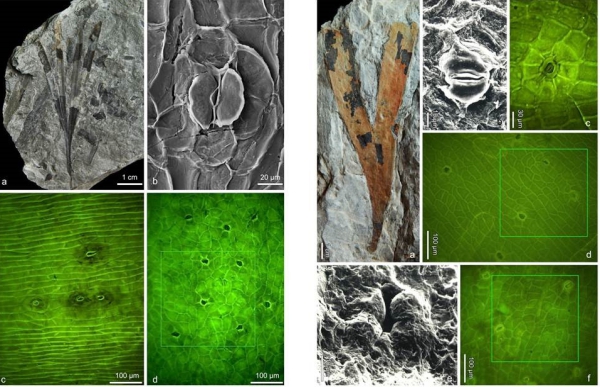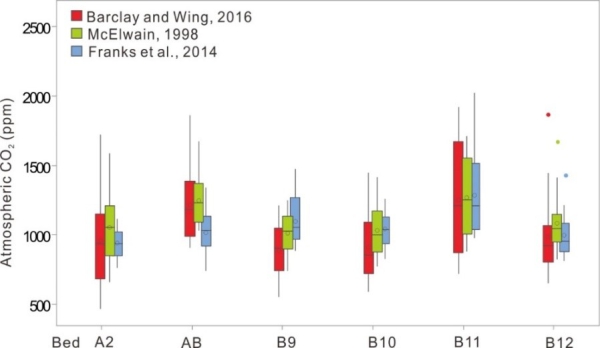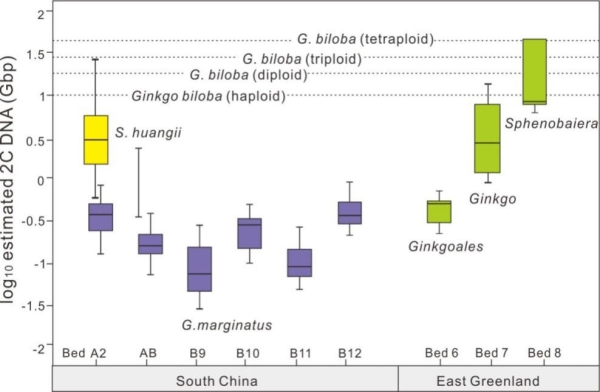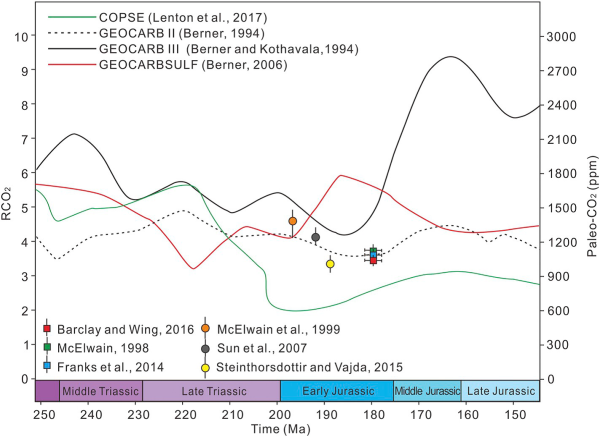The increase of atmospheric carbon dioxide concentration (pCO2) is widely regarded as the main factor leading to global warming. Therefore, reconstructing the atmospheric CO2 concentration during the geological history has important reference significance for humans to predict the future global climate trend. The inverse relationship between concentrations of CO2 in the atmosphere (pCO2) and the stomatal index of vascular plant has been widely used to estimate ancient levels of atmospheric CO2. However, some atmospheric concentration of CO2 in the geological past (paleo-CO2) estimates show little congruence because they are derived using different correlative methods, or from different fossil plant species with different calibration approaches.
Recently, an international research team leading by Prof. WANG Yongdong from the Nanjing Institute of Geology and Palaeontology, Chinese Academy of Sciences (NIGPAS), Dr. ZHOU Ning from the Department of Geology of Northwest University, China and Prof. Jennifer McElwain from the Trinity College Dublin, the University of Dublin, Ireland published a new report in the international journal Palaeogeography, Palaeoclimatology, Palaeoecology about inter-comparison study of three stomatal-proxy methods for CO2 reconstruction applied to early Jurassic Ginkgoales plants.
Researchers applied three methods, including the empirical method of McElwain (1998), the empirical method of Barclay and Wing (2016) and the mechanistic method of Franks et al., (2014) to a single fossil Ginkgo species (Ginkgoites marginatus) to track and assess their consistency of pCO2 estimates for the Early Jurassic. By using an inter-comparison of three methods, a high degree of consistency in pCO2 estimates and trends had been observed in two empirical proxy methods. In addition, the mechanistic method and both the empirical methods also showed generally good consistent paleo-CO2 estimates at the bed-level. To test the congruence of paleo-CO2 estimates, they also applied all three methods to one additional Ginkgoalean fossil species (Sphenobaiera huangii). All three methods showed species-dependent uncertainty in paleo-CO2 estimates when applied to different Ginkgalean fossil species collected from the same fossiliferous bed. Moreover, considering the potential effect of guard cell size to the mechanistic method, the genome size of fossil and living Ginkgo taxa was analyzed based on the significant positive relationship between genome size and guard cell size.
In addition, the continuous variation curve of pCO2 in the early Jurassic in southern China was reconstructed by the three models, it showed that the CO2 concentration is 900–1400 ppm. This result agreed with the values of the early Jurassic pCO2 using the other plant stomatal parameter method and the geochemical models. It is thus demonstrated that the late Early Jurassic (dated about 180 Ma) was characterized by a greenhouse climate condition with global warming and oceanic anoxic events.
This study was jointly supported by the Strategic Priority Research Program (B) of the Chinese Academy of Sciences, the National Natural Science Foundation of China, State Key Programme of Basic Research of Ministry of Science and Technology, China and SKLPS State Key Lab Funding of NIGPAS.
Article reference:Zhou Ning, Wang Yongdong*, Li Ya, Porter Amanda, Kürschner Wolfram, Li Liqin, Lu Ning, McElwain Jennifer*, 2020. An inter-comparison study of three stomatal-proxy methods for CO2 reconstruction applied to early Jurassic Ginkgoales plants. Palaeogeography, Palaeoclimatology, Palaeoecology, 542, 109547. https://doi.org/10.1016/j.palaeo.2019.109547

Two fossil ginkgoalean plants from the Early Jurassic in western Hubei and their epidermal structures and stomatal distribution(left, Ginkgoites; right, Sphenobaiera)

Comparisons of paleo-CO2 estimates using three stomatal-proxy methods. (Red indicates empirical method of Barclay and Wing (2016) ; Blue indicates empirical method of McElwain (1998); and Blue indicates mechanistic method of Franks et al., (2014))

The estimated genome size from guard cell data of fossil Ginkgoites and Sphenobaira and living Ginkgo from South China and East Greenland

Estimated paleo-CO2 values during Early Jurassic obtained from three methods (blue, red and green box), and comparison with other paleo-CO2 estimates based on the stomatal ratios of plant fossils and geochemical models
Download:
